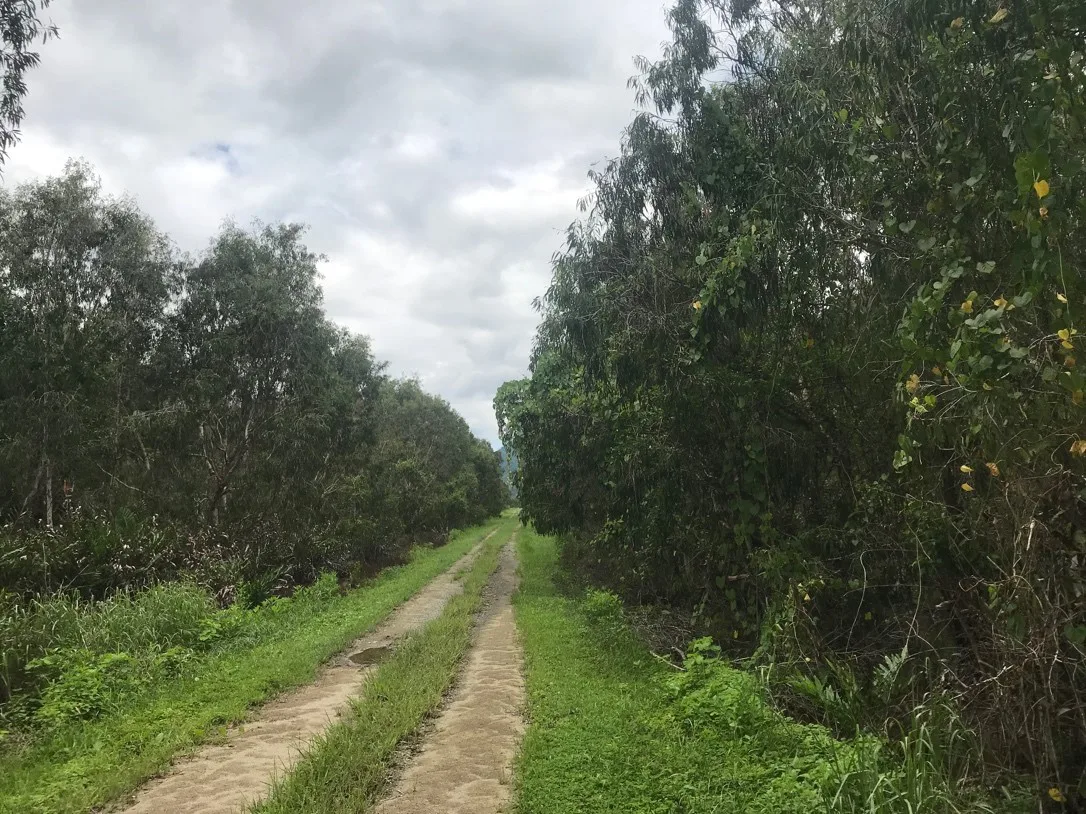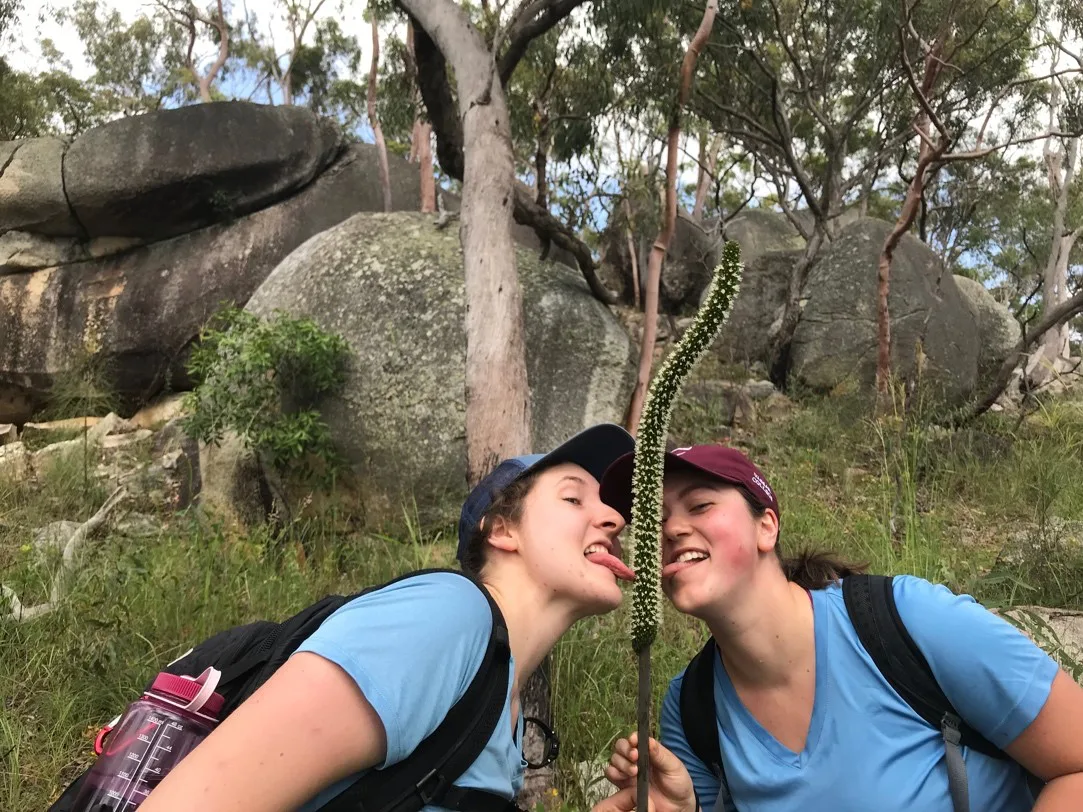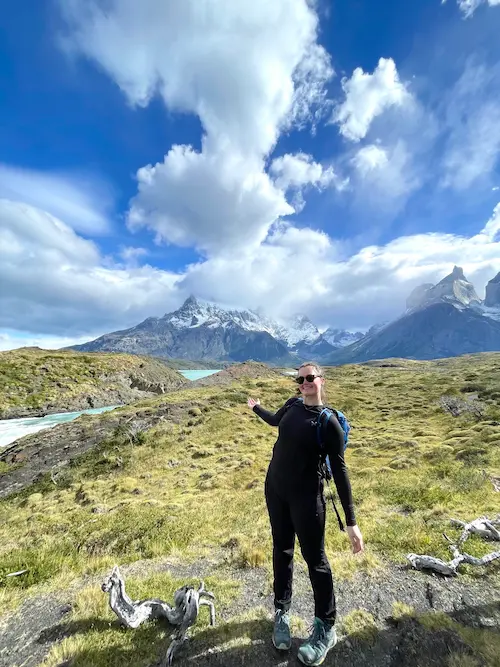SFS: “S’many Fieldtrips and Sprees”
My time at the SFS Center for Rainforest Studies has been great so far. I am now in my sixth week in the country, yet have experienced and seen so much around Cairns, the Center, Atherton Tablelands, Great Barrier Reef, and more. Rather than having all of our learning take place indoors at the Center, our professors and staff at the Center have taken us to various places around Queensland to hold field lectures and go on excursions. These outings have been my favorite part of SFS, so here is some additional information (and a few photos!) about some of the many places we have visited!

Thursday, February 7th
- We left the Center early and went to visit Mandingalbay Yidinji (MY) country, which is an indigenous group that originally lived on the land that the Center now occupies. Our goal was to learn about their traditions to provide context for how the environment impacts individuals’ lives every day. I ate some of the best bread I have ever eaten, learned about medicinal and edible flora and fauna, visited a mangrove (there were no crocodiles, but lots of mosquitoes!), and learned a lot about how these individuals are able to incorporate tradition into modern-day life.
- Then we drove into Cairns, where we stayed the night, and attended a lecture by Reef Teach to learn about the Great Barrier Reef.
Friday, February 8th
- We left our hostel early and went to a ferry terminal in Cairns to go to Green Island. We quickly arrived at a resort called Green Island .
- We walked around Green Island and learned about geological and socioeconomic history of the island, which gave us some context going into the day and related back to lectures we had previously received. We then went on a glass bottom boat and saw a lot of interesting marine life, which had also talked about with our professors. Then we went snorkeling (after dawning a Lycra suit for sun and reef protection), and saw turtles, starfish, loads of fish, the Great Barrier Reef, and everyone was so amazed! Grabbed a milkshake and boarded the ferry back to the mainland.
Saturday, February 9th
- We helped plant 2,500 trees in the morning! We got very muddy but had very fun.
- Then we had a BBQ (aka “sausage sizzle”) with the folks who planned the tree planting (mainly from a group called TREAT: Tree Rehabilitation for the Evelyn and Atherton Tablelands). The food was yummy and it was fun to converse with local community members.
- Then we got in the vans and got ready to drive around for a geology tour! It was very cool to see a lot of different things around the Atherton Tablelands and learn about the geologic history including: Lake Barrine (a crater lake, aka maar, that historically had volcanic activity), a road cut in Malanda showing different layers of sediment from the Hodgkinson Basin, Quincan Quarry/Mountain (previously a cinder cone volcano that now has a lot rocks with air pockets/vesicles), Broomfield Swamp (previously a maar, with dense vegetation, but was then cleared and now has less water so is used for agriculture), Mount Hypipamee (a diatreme that was created by magma encountering groundwater and then shooting through the granite in the way to create a big, deep hole surrounded by granite), and finally Halloran’s Hill, a hill that has a good look-out spot for the seven sisters, which is a series of previous volcanoes which our ecology professor, Siggy, calls pimples. This is just like my hometown’s seven sisters!.

Thursday, February 21st
- Drove to Mareeba and then over to Skybury Coffee.
- A representative presented us with information regarding Skybury’s environmental and social actions, which was interesting. The sustainable agriculture practiced here was refreshing to learn about, and very different than conventional farming in the USA.
- We went on a tour around the farm, from hot houses, a laboratory for tissue culture sampling, and where they grow coffee trees in the shade of papaya plants. They told us all about their attempts to be as sustainable as possible, especially in giving back to the land they grow on.
Monday, February 25th
- Left the Center early to go to the Daintree Rainforest.
- First stop: Croc cruise. We saw four crocodiles that were dispersed along the river, which was very cool! We heard all about crocodiles in previous lectures, and from our professors on board.
- After a lunch break, we went to have two field lectures. The first was a walk around the Daintree on a boardwalk with our Natural Resources Management (NRM) professor, Catherine, about the history of the trees in the area, how the vegetation has adapted to climate change, and an in-depth view into how to classify different rainforest types. The second was at a few tables with our Environmental Policy and Socioeconomic Values (EPSV) professor, Justus, about the social impact of the Daintree remaining a protected forest (without electricity and a state-maintained road without a connection with a ferry), the indigenous history of the area, and environmental protection laws.
- We then headed to the Daintree Discovery Centre to learn more about what we had just discussed in field lectures in a different setting. The Centre had a lot to offer, including a canopy tower that allowed us to see the surrounding rainforest from a different point of view (i.e., on top of the canopy!). We saw dinosaur animatronics and learned about ancient history of the Daintree, which is the oldest rainforest on the planet.

Tuesday, February 26th
- Left our hostel to go to Cape Tribulation, where we went to the Cape Trib fruit farm and tried a lot of tropical fruit. They were all so good, and we learned about how this farm was very family- and sustainably-focused. Their fruit trees are grown dispersed among other fruit trees to avoid monoculture, and they have native bees on their land to make honey and pollinate the trees.
- Drove from Cape Trib to Mareeba, to switch professors! Siggy joined our caravan, and we headed to Chillagoe.
- After a brief history tour about geological history and formation from Siggy before driving into Chillagoe, we went to the Royal Arch Cave. We walked through the cave, lead by a ranger (a part of the Queensland Parks and Wildlife Services, aka QPWS), where we learned about how the cave was created, how the cave used to be utilized, and a bit about indigenous history.
- Back at the campground, we received a brief talk from Siggy about birds in the area around Chillagoe.

Wednesday, February 27th
- A day full of field lectures around Chillagoe with Siggy!
- Started at the Smelters, where we sat in the shade of a large tree and learned about the history of smelters and its environmental, economical, and social impacts on Chillagoe. We then walked around and saw the chimneys that used to be used at the Smelters.
- Next up was a beach we were about 420 million years too late to experience. The hill we climbed used to be a beach (not once but twice, again in the Cretaceous period), and we were able to see the different kinds of vegetation on each side. We learned about the Palmerville fault line, different vegetation sites around Australia, eucalyptus species, and the use of the landscape.
- We pulled off the side of the road in our caravan for another field lecture! This time to learn about geology, termites, and invasive species.
- The Mungana Caves were our last stop for the day, and it was nice to be within the caves in the height of the heat of the day. We learned about limestone caves and bottle trees, and saw a lot of animals.
- One more quick stop at The Hub in Chillagoe to learn about the history of the area, including the geological time scale and more recent history!


Friday, March 1st to Sunday, March 3rd
- A morning of community service to start off a great day.
- Headed into Cairns for the weekend! I stayed at a house with 12 others from the program, and we all had a great time. We split off during the day to do our own things (like go to op shops, use the free Wifi, get ice cream and burgers, and more) and then joined up back at the house to relax.
- The weekend went by so quickly, and then we met back up with the Centre staff to eat pizza by the Lagoon and enjoy each other’s company. Headed back up to the Centre, and we were back to normal!
Tuesday, March 5th
- We head to Orpheus Island! Stay tuned for future blog updates to find out more.
Related Posts


